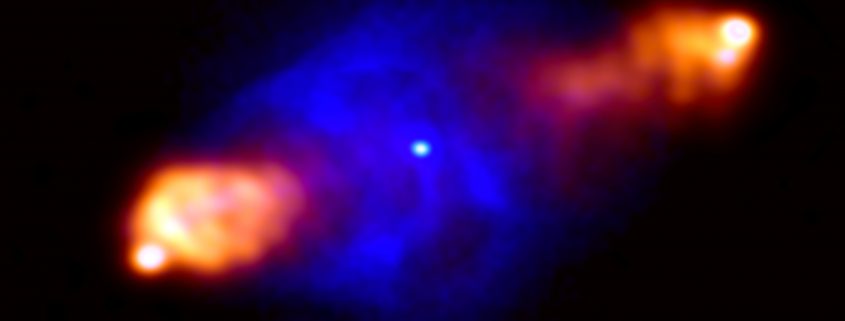LOFAR Telescope First Results!
Scientists from the International LOFAR Telescope (ILT) today announced the kick-off of the project’s first all-sky survey at low radio frequencies and its first open call for observing proposals from the international astronomical community. LOFAR, the Low Frequency Array, is an innovative radio telescope built in the Netherlands and across northern Europe. LOFAR will make the still largely unexplored low-frequency radio sky accessible to astronomers for the first time. It will search for the first stars and black holes in the universe, hunt for cosmic radio bursts, pulsars, and ultra-high energy cosmic particles, study the sun and planets, and explore cosmic magnetic fields.
Above is an image of the Cygnus A radio galaxy observed by LOFAR at 240 MHz. LOFAR is being used to study supermassive black holes and the affect they have on their local environment. A classic example of an active galaxy is Cygnus A, which lies in a nearby cluster of galaxies at a distance of about 700 million lightyears. At the center of this galaxy is a powerful active nucleus that emits jets of plasma at relativistic speeds. An early LOFAR image at 240 MHz shown here that these jets extend far beyond the stellar part of the galaxy, up to 200 thousand light years from
the center, before abruptly interacting with the intra-cluster medium at impact points called hotspots. (Image Credits: J. McKean and M. Wise, ASTRON).
There are further detail on these exciting discoveries in a LOFAR press release at the American Astronomical Society on January 9, 2012.

